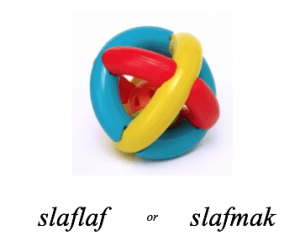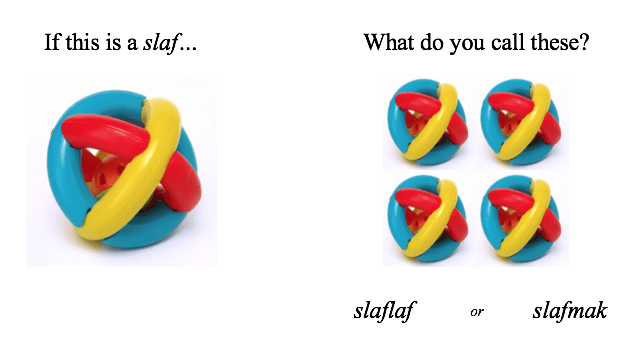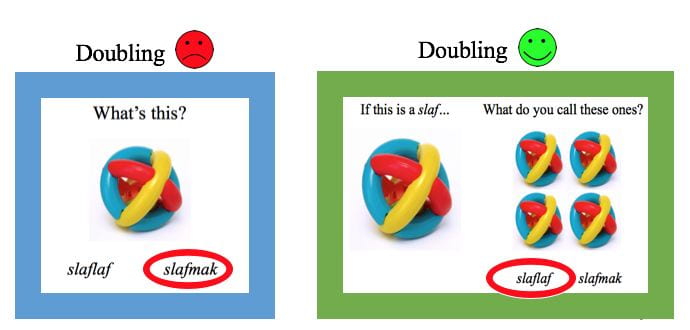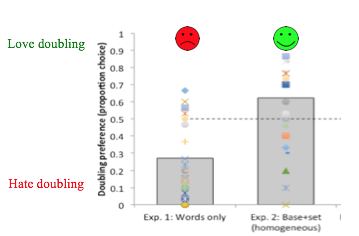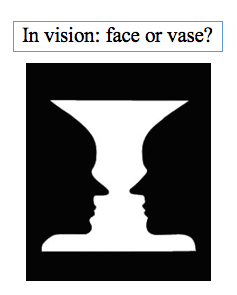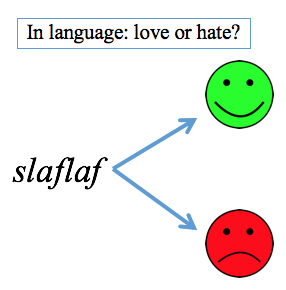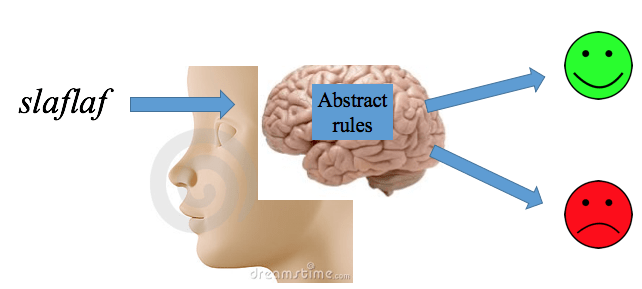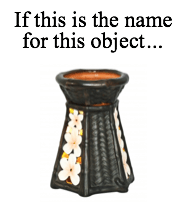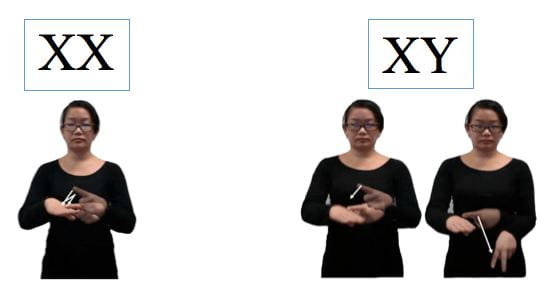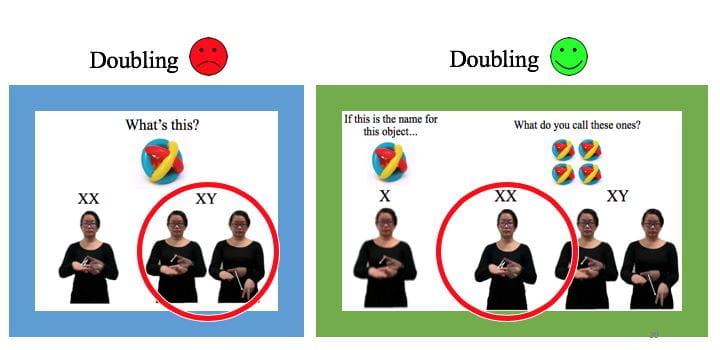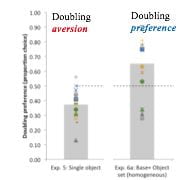The Double Identity of Doubling
How do human brains form language?
Every human community communicates using language, and in most communities, languages rely on speech. Why is speech the preferred form of language?
One possibility is that language and speech are one and the same. Another is that speech is the preferred channel by which language is transmitted, but language and speech are distinct.
To make this more question more concrete, consider the word blog. English speakers like the word blog, but not the word lbog.
On one hand, this could be because lbog is ”bad” English because this speech pattern is hard to hear and say. A second explanation is that, perhaps people do not like lbog because our brain encodes abstract rules of syllable structure, and lbog violates those rules; the “badness” of lbog is not directly related to speech (both speaking and hearing) per se. So, how can we tell which explanation is correct?
Here is one way that we test these explanations. Consider the following object. What do you think is a better name for this object?
Remember which name you chose. Now, try this:
Let’s summarize what has just happened in the two conditions. In both of case, we gave you two options: slaflaf and slafmak. One has what we call doubling. This means that the laf in the word slaflaf repeats. The second word, slafmak does not have doubling.
In the first experiment, there was only one object, and you had to choose between the two names – either with doubling (slaflaf) or without (slafmak).
In the second experiment, we gave you one object and told you its name (slaf), and then showed a group of those objects and asked you to name them. Once again, we gave you two name options, one with doubling and the other without doubling.
When we do this experiment with multiple English speakers, we see that people’s preferences change.
In the first experiment, when there’s only one object, people hate slaflaf (they choose slafmak). However, in the second experiment, when people are first given the single object’s name (slaf), and then shown a group of them, people change their minds. Suddenly, people prefer slaflaf.
Our findings are plotted below:
Berent, Bat-El, Brentari, Dupuis & Vaknin-Nusbaum (2016).
Proceedings of the National Academy of Sciences.
So, why do the responses change between the two experiments?
In the first experiment, the doubling had no meaning. It is just a repetition of sounds. However, in the second experiment, the doubling indicates a systematic change in meaning – from singular to plural.
These findings can tell us more about how human brains form language. The experiments that we used work similar to perceptual illusions. When people look at the face/vase illusion below, they assign two different interpretations to the same input: people can see both a vase and a face.
Our example is just like a perceptual illusion, but in our example, the same word slaflaf elicits two different reactions. In the first experiment, people did not like this word. But, in the second experiment, people’s reactions changed, and they loved it.
Perceptual illusions are important because they help address our original question – how the brain patterns the sounds of language. In both vision and language, the brain takes a single sensory input and creates two competing interpretations. In the case of language, the word slaflaf didn’t change between the two experiments. Therefore, the change in our reaction (hate turning to love) cannot occur simply from our senses – because the speech pattern of slaflaf is hard to hear or articulate. Rather, the change in our reactions must come from abstract rules within our brains. So these results suggest that the rules of language are distinct from speech itself.
We next ask, how abstract are these rules?
A yet stronger test of whether language is distinct from speech is to examine whether the rules of language would apply even when language is not transmitted by speech. Many linguistic communities communicate via sign language – they rely on their hands and eyes, rather than ears and mouth. If the rules of language are abstract, then it is possible that people would project them even to manual signs!
Want to test this out? Let’s do another short experiment. Here is another object:
Now watch each video. Each is a possible sign in sign language. Which sign do you think makes a better name for this object?
Now try this:
Just like with spoken words, signs can also have doubling. In these two experiments, you chose between two signs. One had doubling (XX), and another did not (XY).
The important finding, again, is that people’s responses shift. When presented as a name for a single object, people hate doubling (they select XY) – but when you first give them an object and its name, followed by a group of those objects, people then actually prefer doubling (and select XX).
Below is a plot of our findings:
Berent, Bat-El, Brentari, Dupuis & Vaknin-Nusbaum (2016).
Proceedings of the National Academy of Sciences.
This finding should sound familiar! It is the same reaction that people have when doing the same experiment but with spoken words. When doubling has no meaning, people hate it. But, when doubling signals a change in meaning, it is preferred.
Before, we said doubling is a kind of perceptual illusion, because a single word produces two different reactions (love or hate). This is important because it shows that people’s reactions to language do not only depend on what we see or hear (speech), but on how the brain interprets the linguistic stimulus.
Now we see that the way the brain encodes language is so abstract that these principles can even apply in the same way to speech and signs. In both cases, people can either hate or love doubling, depending on the context. And it is the same context that produces love or hate across language modalities.
What this means is that human brains can construct languages in different modalities—using either speech or signs. Speech is the preferred channel of expressing language, and language and speech are not one and the same.
